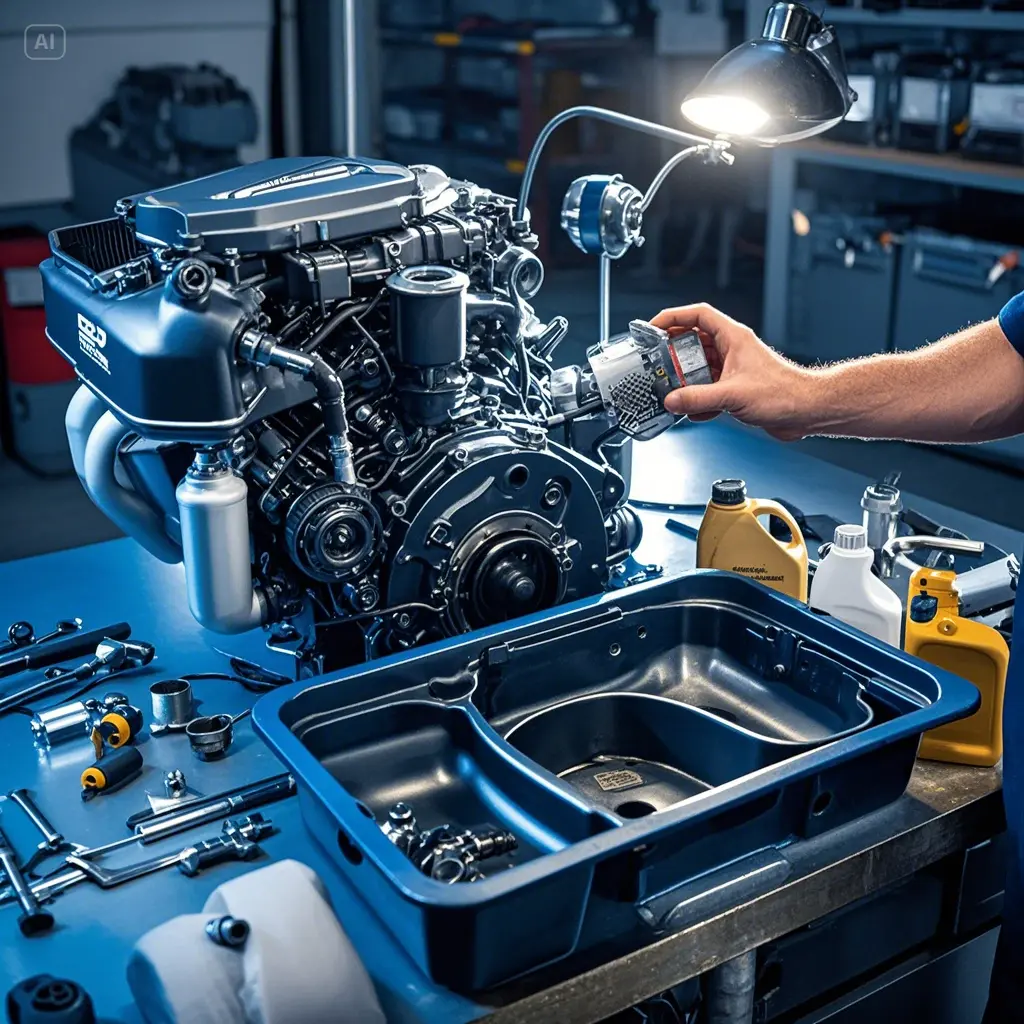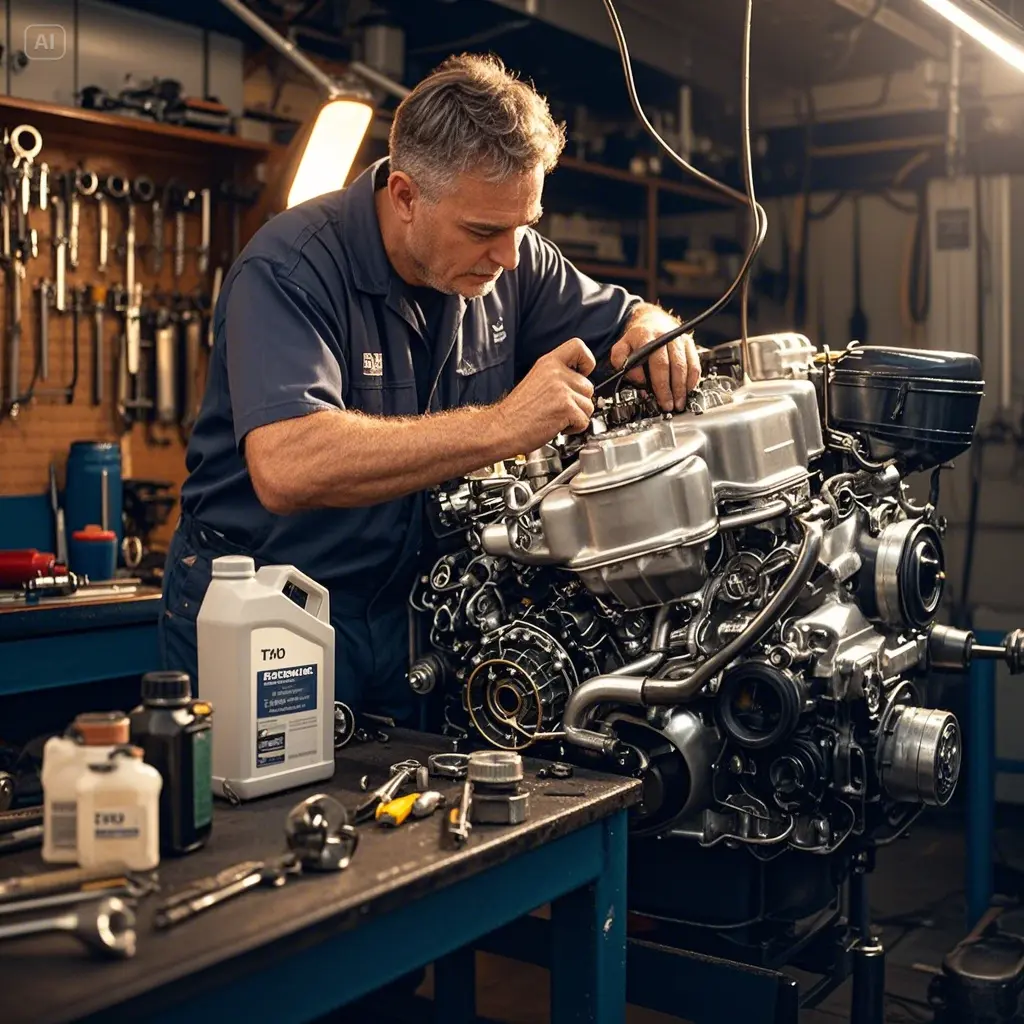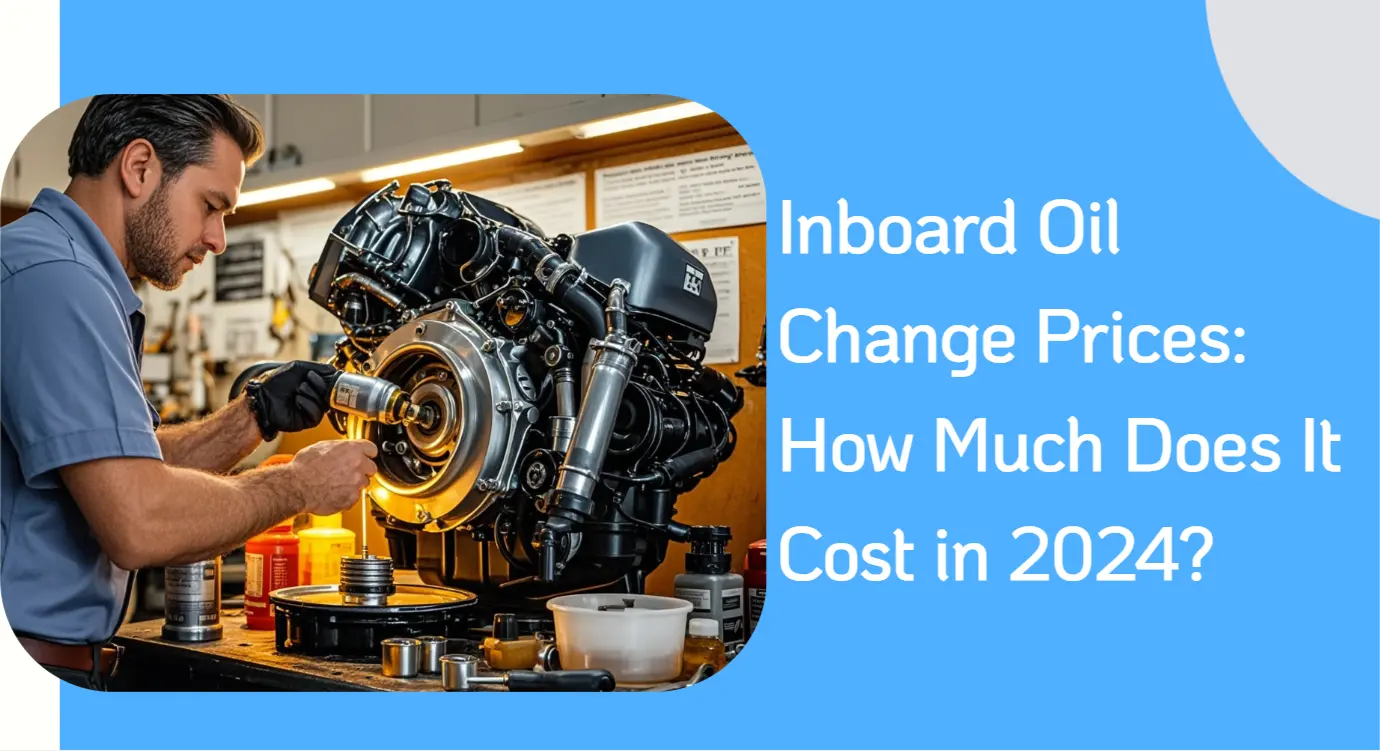Maintaining your boat’s engine is crucial for ensuring optimal performance and longevity. One of the most important maintenance tasks is the inboard oil change. Regular oil changes help keep your engine running smoothly by removing contaminants and ensuring proper lubrication. This article will provide a detailed overview of the costs associated with an inboard oil change, including average prices, factors affecting costs, and tips for saving money.
[BUTTON: Find Service Professionals near you]
What’s in this cost guide?
- Average Inboard Oil Change Prices
- How much does a Service Professional charge per hour?
- Factors Affecting Inboard Oil Change Costs
- Additional Costs and Hidden Fees
- How to save money on Inboard Oil Change
- Example Case: Cost Breakdown
- Tips for hiring the best Service Professional

- Boat Drive Systems: Understanding the Basics
Boat Engine Cooling: A Comprehensive Guide
Boat Exhaust System: Understanding Costs and Maintenance
Average Inboard Oil Change Prices
The cost of an inboard oil change can vary based on several factors, including the type of oil used, the size of your engine, and whether you perform the service yourself or hire a professional.
| National average cost | $150 |
|---|---|
| Low-end cost range | $100 – $120 |
| High-end cost range | $200 – $250 |
These prices reflect the costs associated with both DIY oil changes and professional services. When considering an inboard boat oil change, it’s essential to factor in the quality of oil and any additional parts needed, such as filters or seals.
How much does a Service Professional charge per hour?
When hiring a professional for an inboard motor oil change, it’s important to understand their hourly rates. These can vary based on location and expertise.
| National average cost | $75/hr |
|---|---|
| Low-end cost range | $50 – $65/hr |
| High-end cost range | $80 – $100/hr |
Hourly rates may fluctuate depending on the complexity of the job and the technician’s experience level. Always ask for an estimate before proceeding with any work.
Yanmar Diesel Rebuild: A Comprehensive Guide to Repairing Your Engine
Factors Affecting Inboard Oil Change Costs
Several factors can influence the overall cost of an inboard oil change:
- Type of Oil Used: Synthetic oils tend to be more expensive than conventional oils but offer better protection.
- Engine Size: Larger engines require more oil, which can increase costs.
- Labor Costs: Rates can vary significantly based on your location and the service provider’s expertise.
- Additional Services: If you need other maintenance performed at the same time, such as changing filters or checking other fluids, this can add to the total cost.
Understanding these factors can help you make informed decisions when budgeting for your inboard oil change.

Additional Costs and Hidden Fees
When planning for an inboard oil change, be aware of potential additional costs:
- Oil Change Kit for Inboard Boat: Some service providers may charge extra for an oil change kit that includes all necessary components.
- Environmental Fees: Some shops may charge fees for disposing of old oil and filters.
- Inspection Fees: If you request additional inspections during your service, this may incur extra charges.
To avoid unexpected charges, always ask for a detailed estimate before work begins.
How to Save Money on Inboard Oil Change
Here are some tips to help you save money on your next inboard oil change:
- Perform It Yourself: If you have basic mechanical skills, consider doing the oil change yourself. This can save you labor costs.
- Buy Oil in Bulk: Purchasing larger quantities of oil can often lead to savings over time.
- Use Aftermarket Parts: Consider using aftermarket filters instead of OEM parts; they can be just as effective at a lower price.
[BUTTON: Get free estimates now. Contact the best Service Professionals near you.]
Example Case: Cost Breakdown
Let’s consider an example scenario for an inboard motor oil change:
- Oil (Synthetic): $60 (5 quarts)
- Oil Filter: $15
- Labor (2 hours): $150 ($75/hr)
Total Estimated Cost: $225This breakdown illustrates how costs can accumulate during an inboard oil change. By understanding each component’s price, you can better budget for future maintenance.
Tips for Hiring the Best Service Professional
When seeking a professional for your inboard boat oil change, consider these tips:
- Check Credentials: Ensure that the technician is certified and experienced with inboard engines.
- Read Reviews: Look for customer feedback online to gauge reliability and quality.
- Ask About Warranties: Inquire if they offer warranties on their work or parts used.
How to Become a Yamaha Marine Mechanic: A Step-by-Step Guide
Frequently Asked Questions
- How often should I perform an inboard oil change?
- It is generally recommended to change the oil every 50 hours of operation or at least once a season.
- What are signs that my engine needs an oil change?
- Common signs include dark or dirty oil, unusual engine noises, or decreased performance.
- Can I use any type of oil for my inboard engine?
- Always refer to your owner’s manual for specific recommendations regarding oil type and viscosity.
- What should I do with old engine oil?
- Dispose of it properly at designated recycling centers or through local waste management services.
- Is it worth using synthetic oil?
- While synthetic oils are more expensive, they provide better protection and may extend engine life, making them a worthwhile investment.
[BUTTON: Request quotes from pros. Find Service Professionals near you.]

- Diesel Engine Rebuilders: Your Guide to Marine Engine Maintenance and Repair
Marine Diesel Specialist: Frequently Asked Questions
Diesel Marine Mechanic Salary: A Comprehensive Guide
Conclusion
In conclusion, understanding how to perform an inboard oil change is essential for maintaining your boat’s performance and longevity. Regular maintenance not only prevents costly repairs but also ensures safe operation on the water. Whether you’re changing the oil yourself or hiring a professional, being informed about costs and procedures will empower you to take better care of your vessel.By following this guide, you’ll be well-equipped to handle your next inboard motor maintenance task confidently while ensuring optimal performance throughout your boating season.
[CATALOG_LINK]
[BUTTON]

